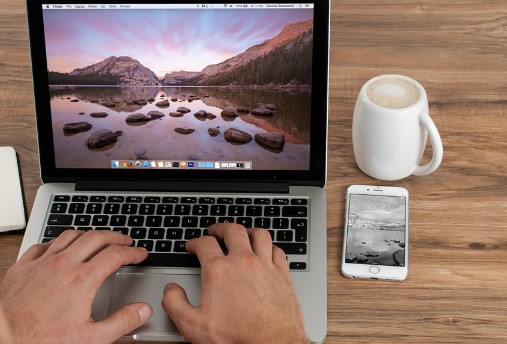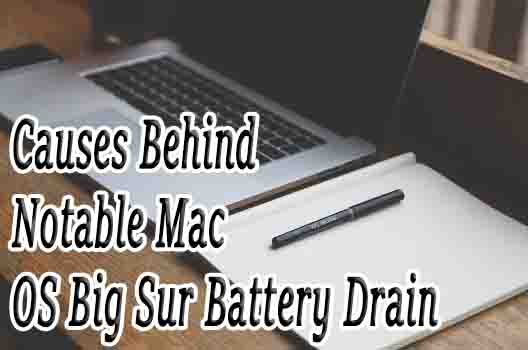Quick battery drain is the most annoying problem no one wants to experience. Many Mac users experience Mac OS Big Sur battery drain issues after upgrading to the new macOS Big Sur version. They see the unusual and terrible battery drain.
Before you approach Apple customer support or service, there are some tricks you can work on. Let’s discover the causes of battery issues and potential solutions that have worked for many users.
Table of Contents
Why Does Battery Drain Fast After an Update?
Some battery-related problems might be due to hardware issues. At the same time, others might be associated with the software of macOS Big Sur. The main cause is that after updating the version, Mac has to re-index various file databases and Spotlight databases.
For example, the Photos library. Re-indexing is a processor-consuming task that drives the CPU hard and takes huge power. Thereby draining the battery more quickly than it would usually do. Other reasons might be worn-out batteries, outdated programs, and cluttered storage.
Is Kernel Manager Process a Culprit?
A procedure that manages texts or kernel extensions in third-party apps is called Kernel manager. When third-party apps have problems with the kernel extensions, they force the kernel manager to work hard by consuming a huge CPU cycle.
To identify if the kernel manager process is a culprit:
- Click Utilities in Applications and open the Activity monitor.
- Organize processes by CPU cycle by hitting the CPU column.
- Find a process – kernel manager. If the process consumes about 70% or more CPU cycles, it causes a battery drain.
How to Confirm Spotlight Is a Reason?
As stated above, the Spotlight app can be the main reason behind the Mac OS Big Sur battery drain problem. The app starts creating new disk indexing after an update. This process can take about 2 days and eat a huge amount of energy.
To figure out whether the Spotlight app is indexing or not, tap on the Spotlight icon. Enter some characters in the search bar. When you see a progress bar with Indexing…, this means Spotlight keeps indexing and consumes a great number of CPU cycles. So, wait until it’s done.
Reboot/Restart Your Device
If Spotlight is not indexing, but there is something that is not operating properly, then restart your device. It would be the simplest way to resolve the battery drain problem. Rebooting helps in closing all the unwanted applications that are working in the background on Mac.
To restart your Mac computer:
- Tap on the Apple logo at the top of the navigation bar.
- Simply hit on the Restart button.
- At last, wait until your Mac computer starts rebooting.
- Once it restarts, keep it idle for some minutes and then check the battery draining speed.
Customize Your Battery Settings

To improve the battery life of your macOS Big Sur, customize the smart battery settings. From determining the usage history of the previous 24 hours and 10 days to activating the power nap, it helps in many things.
The new battery settings will also help in scheduling the Mac system to start or wake at the required time. To apply new settings, click System Preferences and select Battery. Or, tap on the battery menu and select Battery Preferences. Now, customize the settings accordingly.
Reset NVRAM and PRAM
This method is a bit more involved but proves effective in solving the frustrating battery drain issue. It resets a few settings without deleting the data on your Mac. Switch your Mac off and turn it on again. Tap the Command + Option + P + R keys simultaneously.
Press these keys after hearing the startup voice and keep holding them. Release these keys when your device reboots and you get the startup sound again. If you own a 2016 or newer MacBook Pro, hold these keys for 20 seconds just after turning on Mac.
Disable Visual Enhancements
The excellent motion effects on Big Sur can also create more load on your Mac computer. Just because your macOS Big Sur system is not completely optimized, it’s important to reduce the load in the meantime.
For this, you can turn off your Mac’s visual enhancements. Hit on the Apple logo at the screen’s top left side. Next, tap on System Preferences and then Accessibility. On the side menu, click Display. Finally, enable Reduce Motion and Reduce Transparency. Doing so will improve the overall computer performance as well. And if you are interested in learning about other ways to improve the MacBook’s speed, the video below has the answers:
The Conclusion
So, you can see that Mac’s battery might drain quickly due to various reasons after updating to Big Sur. Their solutions depend on the cause of the issue. Hopefully, this article will guide you to stop your Mac system from running out of battery quickly.
When you can’t manage the issue with these tips, try resetting SMC and updating macOS. If your battery is still draining so fast, visit the Apple Store as the issue might be hardware related. Ask experts for battery replacement.

